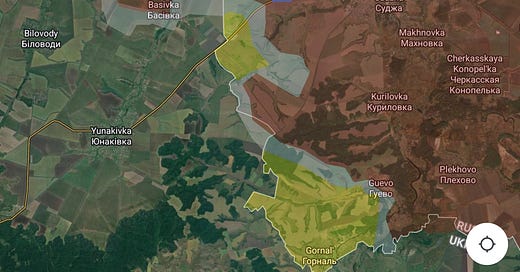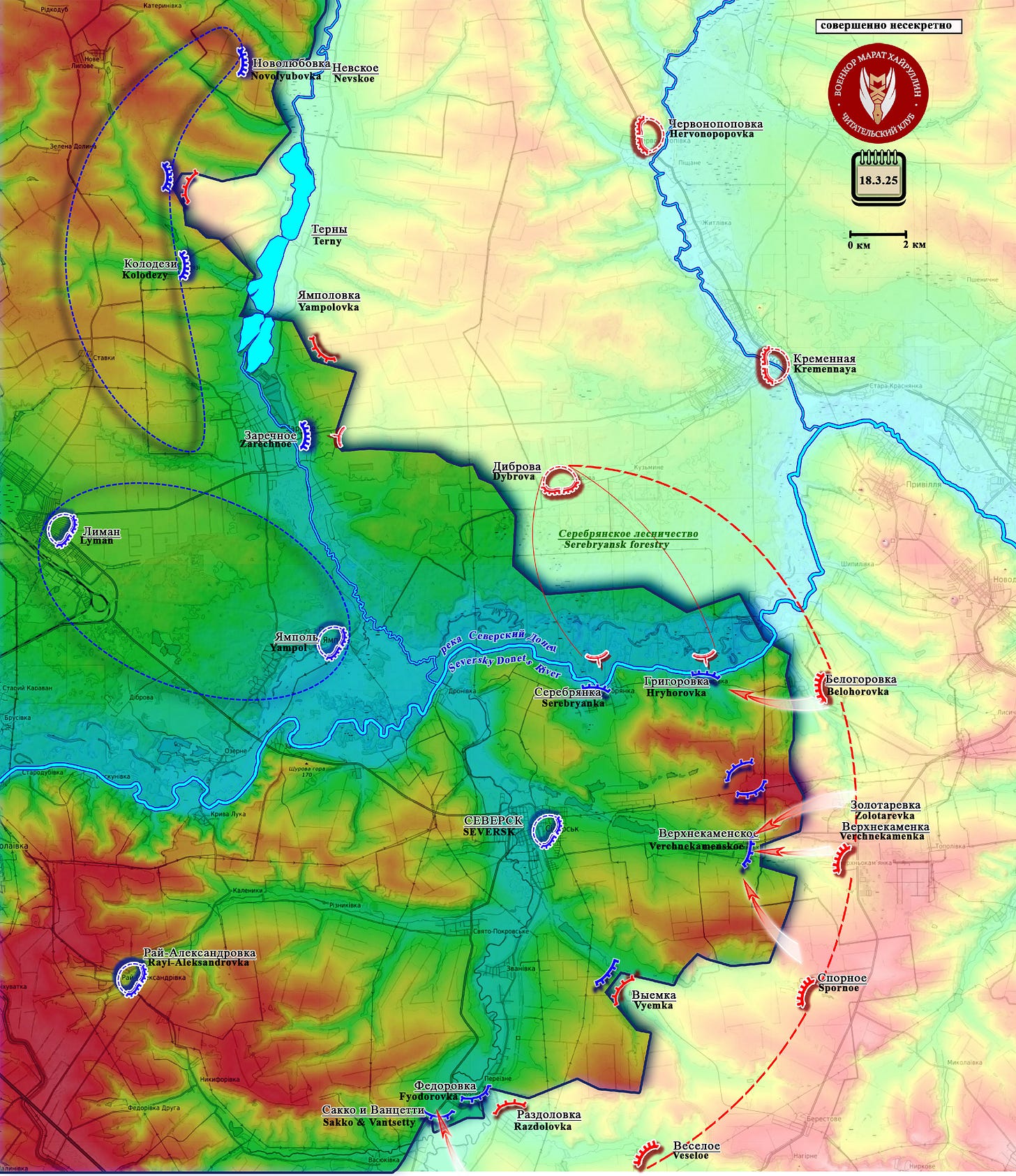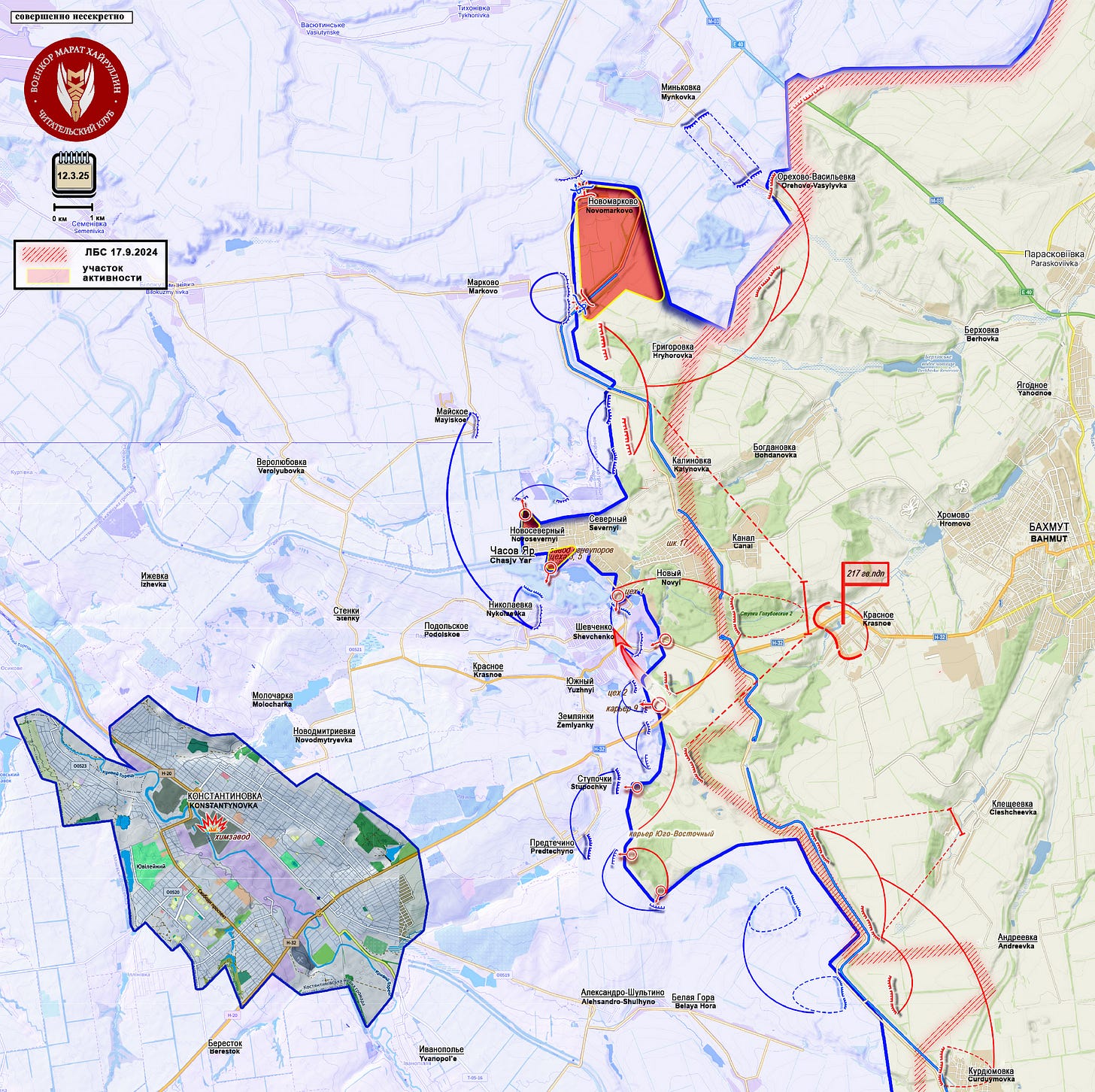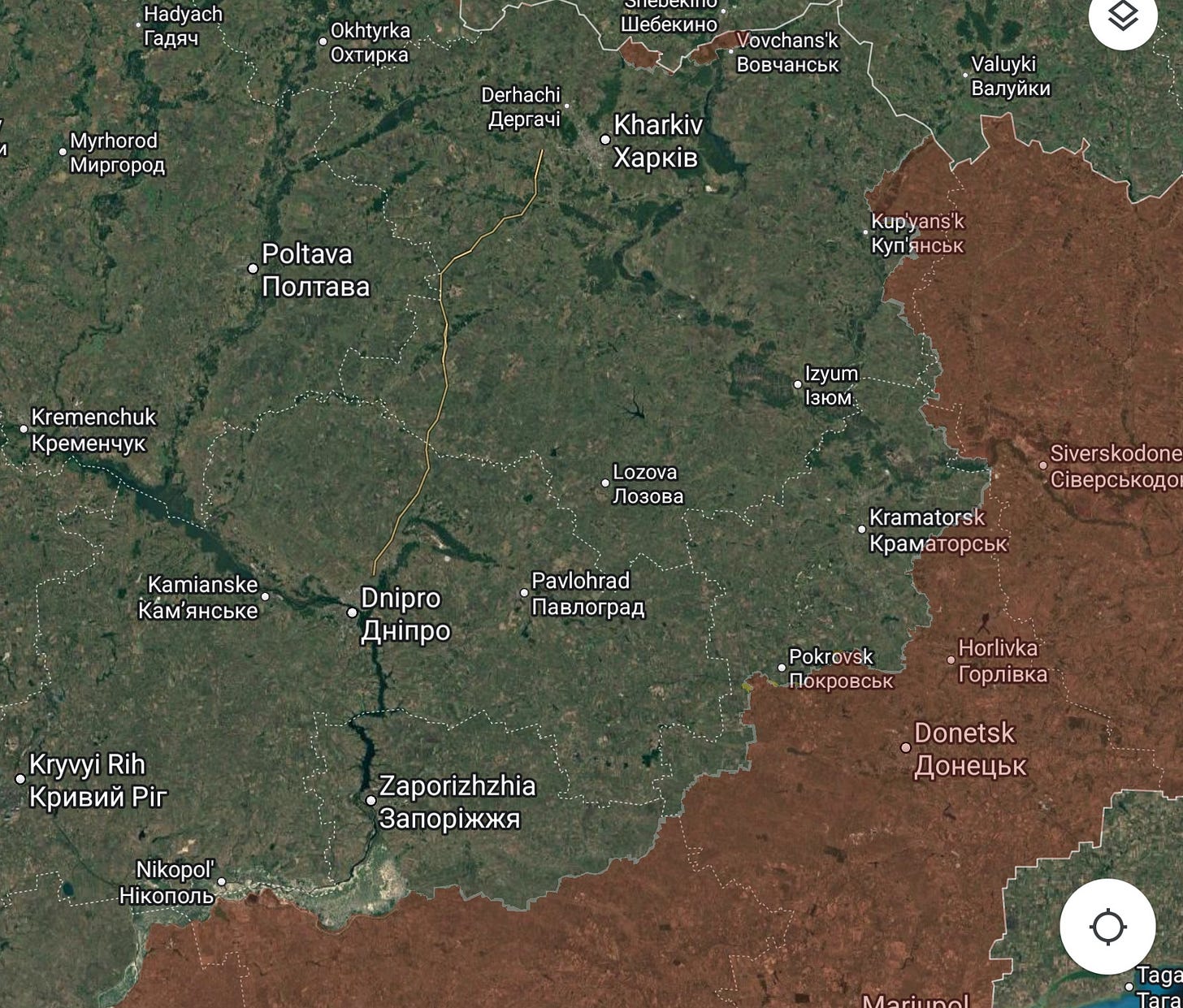Russia's Plan for 2025
Major Frontline Summary for March 11-17, 2025. Report by Marat Khairullin.
While everyone is focused on political developments, trying to predict what will happen next, our troops have practically pushed the Armed Forces of Ukraine out of the Kursk region. The contours of the operations that the Russian Army will conduct are now becoming visible.
By the beginning of 2025, the enemy forces had been reduced to a state where holding their flanks became an almost insurmountable task. The internal problems of the Ukrainian army are compounded by the sentiments of the people in Ukraine itself, where citizens witness the lawlessness and atrocities of the TCC (Ukraine's draft conscription emforcement), as well as the difficulties faced by external curators and sponsors of the war, especially after the shift in the U.S. administration.
Let’s take a look at how events on the front line may unfold this year.
From the very beginning, we stated that the "Kursk adventure" by the AFU was a suicidal move. For many months, the enemy had been probing the possibility of entering our territory along the line from the Bryansk to the Belgorod regions (everyone remembers the stories about sabotage and reconnaissance groups). By striking the Kursk region, they initially hoped to reach Kurchatov and seize the Kursk Nuclear Power Plant.
Our forces noticed that the Ukrainians were preparing something but did not expect them to amass such significant forces. Despite this, the enemy was met with a worthy response. However, by secretly accumulating troops and deploying frontline air defense, they pushed forward, ignoring losses and literally advancing over their own corpses.
It is already known that in the first four days, we eliminated about a third of their frontline air defense potential, not counting other equipment. But they were seeking media attention.
Naturally, they failed to reach Kurchatov. Our military contained their offensive. After this, the AFU began digging in literally everywhere. Their losses during this period exceeded those during the much-hyped "counteroffensive" of 2023 by two to two and a half times, reaching up to a thousand personnel per day.
As a result, their advance of about thirty kilometers on a relatively small section of the front cost them approximately sixty thousand personnel. The Ukrops losses in equipment were also staggering. In the first days, they lost up to two to three dozen tanks per day.
Within the first few weeks, the AFU lost the group that had been prepared for this operation and replaced it with scarce reserves pulled from everywhere, including freshly mobilized individuals rounded up from the streets.
Failing to achieve their initial goal of capturing the nuclear power plant, the Ukrainians hoped that we would panic and redeploy units from the Pokrovsk direction, weakening it.
I believe this was the last desperate move of a cornered rat. Moreover, if we look closely at the date this adventure began, we can see that it was timed to coincide with specific events, namely the U.S. election race.
Currently, the Ukrainians hold only a few villages near the border and a few ravines where they tried to regroup during their retreat. Many are now wondering whether Russian troops will pursue the retreating forces into Sumy, especially since we already have a foothold in the Sumy region near Zhuravka, Novenkoe, and Basovka.
Most likely, given that our forces are not heavily resigned to this direction, diplomacy will take over. If we aim to gain control of these territories, it is better to acquire them intact rather than as rubble.
Why do I think we won’t move on Sumy in 2025?
To understand this, we need to look at the Kharkov region, where a security zone is already being formed along the line Volchansk–Velykyi Burluk–Kupyansk.
Control over this route, combined with the Seversky Donets River and its cascade of reservoirs to the west, creates an ideal security zone, as mentioned by Vladimir Vladimirovich Putin. It appears that this is only the first stage, as we insist on a demilitarized zone extending to the Dnieper River under our control, including Odessa and Nikolaev.
Given that we have already taken out most of the power generation in the Kharkov region, integrating it into our grid (after demilitarization) will be a prelude to its incorporation into Russia.
One of the points of the plan for this year is already visible—the creation of a security zone along the Volchansk-Kupyansk highway.
Another obvious area is the formation of a cauldron around Kupyansk, where one pincer is near Dvurechnaya, and the other is near Kruglyakovka-Senkovo. Our forces are also pressuring the AFU bridgehead on the left (eastern) bank of the Oskol River in the Borovsk direction. This is also part of the Kharkov region. Its significance lies in covering the main supply line to the Slavyansk-Kramatorsk agglomeration, which runs through Izyum.
We are also advancing toward this agglomeration from the Liman direction, where we broke through the defense line near Kolodezi and are moving toward Torskoe-Zarechnoye.
From these two directions, our forces can simultaneously reach the last fortified area before Liman near the settlement of Stavki.
Capturing Liman not only gives us access to the rear of Slavyansk but also cuts off the supply route to Seversk. Given that our forces are advancing from Belogorovka to Serebryanka (which will still require significant effort), the Ukrainians entrenched in the Kremensky forests will have to retreat to Seversk to avoid being trapped in a cauldron as a sacrifice.
The next key area is, of course, Chasov Yar. This is the last fortress of the Ukrainians, covering Konstantinovka and Kramatorsk, which is currently the capital of the occupied part of the Donetsk People's Republic (DPR). When the main heights near Chasov Yar are already under our control, Russian troops will advance toward Kramatorsk and the road connecting it to Konstantinovka.
The complete liberation of Chasov Yar opens up several directions for us. Cutting off the supply route from Kramatorsk isolates Konstantinovka and, by extension, the Toretsk sector.
If we simultaneously apply pressure from the Seversk direction, the domino effect will take hold for the Ukrainians.
As for Dzerzhinsk (Toretsk), while the Ukrainians are trying to regain some ground there, they lack flanks (it should be noted that they partially managed to push us back in the city, but their recent successes have begun to fade). Our forces are tightening the noose of a double encirclement.
Once any part of the pocket collapses, the Russian Armed Forces will likely move from the Vozdvizhenka area to bypass Pokrovsk, cutting off the supply route through Rodinskoe.
Meanwhile, south of Pokrovsk, our armed forces have reached open terrain, where they can move toward the city’s supply line from Pavlograd and into the rear of the AFU grouping on the Zaporozhye direction, all the way to Dnepropetrovsk, through areas without strong fortifications.
The time required to build such fortifications is one of the reasons for the Ukrainians’ persistent calls for a ceasefire.
If we reach Dnepropetrovsk, we can destroy all bridges across the Dnieper, cutting off the left bank, and then proceed to clear our territories of the enemy.
At the same time, activity is increasing in the Zaporozhye direction. If we look back a year, we can see a consistent chain of events on the front. After the capture of Avdeevka in February of last year, the Chasov Yar direction became active. By May, the Toretsk direction had also come to life. By mid-summer, settlements near Toretsk were taken, and our troops entered the city.
At this point, the Pokrovsk direction became active. The Tonenkoe line was captured, followed by Selidovo, and Ugledar fell, leading to the encirclement of enemy forces near Pokrovsk.
After the liberation of Kurakhovo, our troops gained operational freedom.
As a result, the enemy’s main unified fortified line has been fragmented. We will soon see where the diversionary and main strikes will occur.
From my perspective, the main direction will be the encirclement of Dnepropetrovsk, (Ukrainian: Dnipro) which is less than 80 kilometers away. The city itself does not need to be taken physically. As I mentioned earlier, it can be blockaded by destroying the bridges. This would not require large forces, allowing troops to be redirected for the complete liberation and clearing of the Zaporozhye and Kherson regions, and then onward to Odessa.








"and then onward to Odessa"
How I love this phrase!
That is some serious strategic planning and developments!! May it all become reality in 2025!
Excellent report as always, Marat! God Bless Russia!